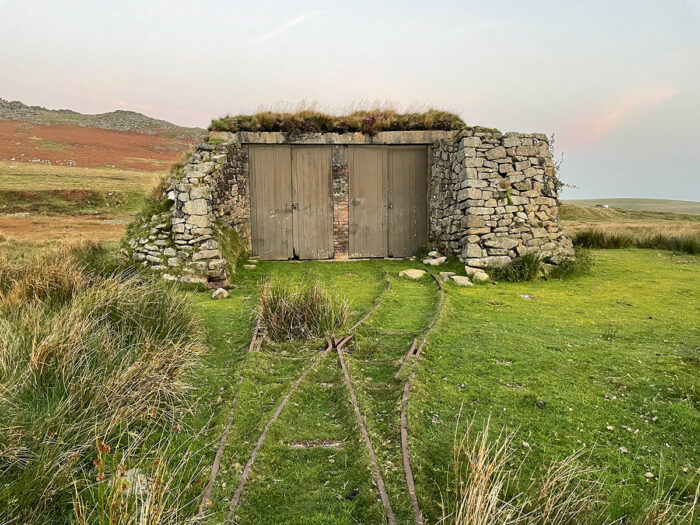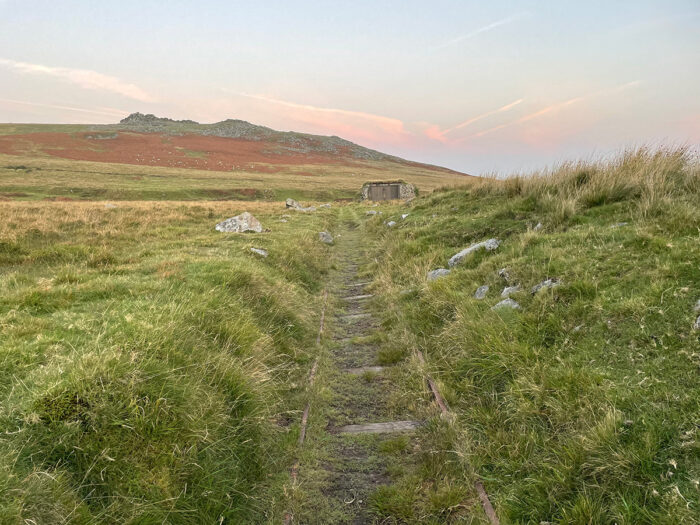The Rowtor Target Railway, a fascinating military narrow-gauge target railway, was a unique piece of history nestled in the picturesque landscape of Dartmoor. Operating with a gauge of just 24 inches (610 mm), this railway served a vital role during a significant period in military history.
Constructed during World War II, the Rowtor Target Railway was part of a broader effort by the British military to enhance their training and preparedness for the war effort. The railway’s primary purpose was to serve as a moving target for soldiers and artillery training exercises. Its narrow gauge allowed for mobility and ease of relocation, making it an ideal choice for this specialised application.
Due to the dumbbell shaped design with turning loops at either end, it was possible to run the unmanned trolley, onto which a wooden target in the shape of a military tank was fixed, continuously back and forth along the track.
The railway featured a network of tracks that crisscrossed the rugged terrain of Dartmoor, providing a challenging environment for military training. Soldiers would practise tracking, aiming, and firing at the moving target, honing their skills in a realistic setting. The Rowtor Target Railway contributed significantly to the effectiveness of British forces during the war by improving marksmanship and artillery accuracy.
Beyond its military function, the railway also left an indelible mark on the Dartmoor landscape. It became a part of the local folklore, a symbol of the region’s wartime history. Today, remnants of the railway can still be found, evoking memories of a bygone era.
In conclusion, the Rowtor Target Railway was not just a military asset but a testament to the innovative solutions developed during times of conflict. Its narrow gauge and dynamic use as a moving target made it a crucial training tool during World War II. The legacy of this railway lives on, serving as a historical reminder of the sacrifices and efforts made during one of the most significant periods in modern history.




